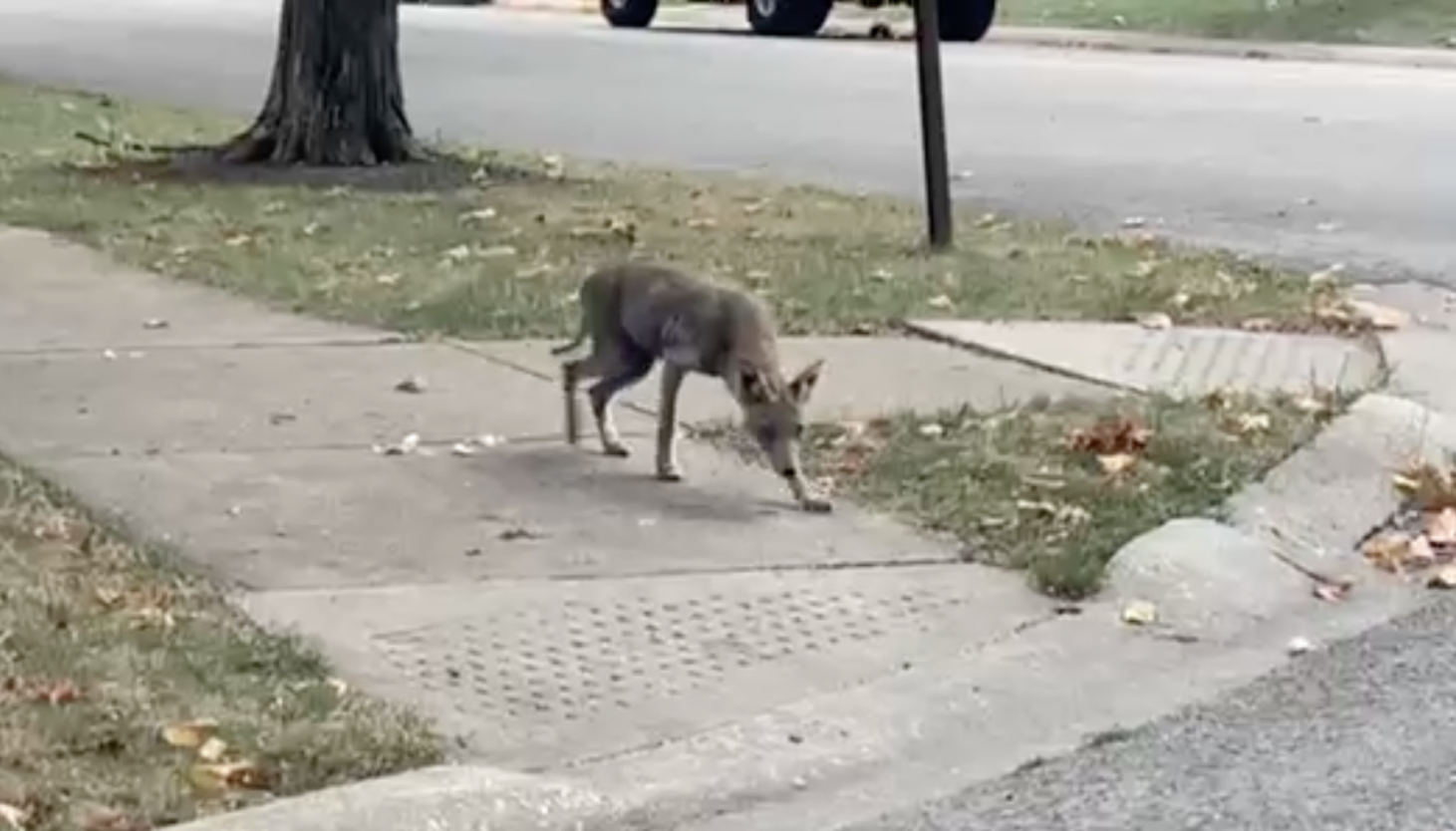At first blush, the creature gobbling up a discarded piece of sandwich near the curb in Park Ridge and rolling around on the grass in front of a home in broad daylight over the weekend in the northwest suburb appeared to be happy, frolicking.
Passersby stopped to take photos and marveled at what kind of animal it was — it was dog-like to be sure, but was it a baby fox? Or some sort of exotic pet that had escaped?
With that coloration, and lack of fur, it wasn’t clear.
Shown a video later, wildlife experts immediately knew — it was a young coyote suffering from a form of mange. That’s a disease that comes from burrowing, parasitic mites and results in intense itching that can cause host animals to lose their coating and lead to complications that might ultimately kill them.
“It is a horrible, depressing disease,” says Stanley Gehrt, a wildlife ecology professor at Ohio State University and chair of the Center for Wildlife Research at the Max McGraw Wildlife Foundation in far northwest suburban Dundee Township.
“When the animal gets an infection as advanced as this one, they become active during the day and lose their fear of people or dogs,” says Gehrt, who’s studied coyotes in the Chicago region for many years. But “we have yet to see any aggression in them. They are no threat, but it is understandable that the public may feel differently.”
“These poor coyotes are simply just too uncomfortable or compromised to worry about avoiding us. I just hate seeing them infected with it.”
Chris Anchor, a wildlife biologist with the Cook County Forest Preserve District who’s also studied coyotes for decades, says of this creature, “It’s been attracting a lot of attention.”
He says his office has been getting “many” calls about it, and believes he knows its family unit, which lives in that area that straddles the border with Chicago’s Edison Park neighborhood and Niles.
“The animal is one of three pups, its two siblings are not affected by the mange,” Anchor says, adding it’s probably not living with them but does still interact with the siblings based on reports he’s received.
While he doesn’t believe it’s dangerous, he emphasizes the public should leave it alone and definitely not feed it.
“I know it looks horrible, like a chupacabra,” Anchor says, but he hopes this one will rebound. “People aren’t used to seeing coyotes like that.”
Gehrt says of sarcoptic mange, “There is little threat to people or pets. Technically, it can be spread to both, but in reality that rarely occurs. Unfortunately, the disease has been occurring at low levels in the Chicago coyote population for most of our monitoring over 20 years. In most years, about 10 to 15% of the coyotes get some degree of infection.”
Scratching can lead to cuts and infections in creatures with mange, and the loss of fur can lead to animals freezing in the extreme cold, experts say. Coyotes that gobble rats or mice that had eaten rodent poison can develop weakened immune systems that make it tougher to ward off complications caused by mange.
Anchor estimates there are “thousands” of coyotes in the Chicago area, with some believed to be living at Navy Pier, by Soldier Field and in Lincoln Park, among many other spots.
Most stay below the radar and “are home bodies.” But some “become transient,” with one coyote Anchor once studied in the Palos area ending up months later in Holland, Michigan.

